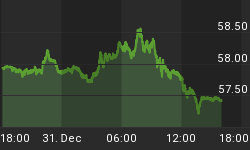Ever since the rally out of the March 2009 low began, I've been saying that we have been in a bear market rally that should ultimately prove to separate Phase I from Phase II of a longer-term secular bear market. This view has not changed. Based on the overall evidence at hand, I continue to believe that we are operating in an environment much like that of the 1966 to 1974 secular bear market, with the advance out of the 1966 Phase I low being similar in nature to the rally out of the 2009 low. Please see the charts at the end of this article for comparison. It is because of the fact that the preceding bull market, that peaked at the 2007 top, ran some 33 years, as opposed to the 24 year bull market that preceded the 1966 top, that this bear market is expected to also be proportionally longer in duration. We know, based upon our bull and bear market relationship studies, which have been discussed here many times in the past, that this secular bear market is expected to run some 10 to 12 years, which means that we shouldn't expect THE bear market bottom until the 2017 to 2019 timeframe. So, in the big picture, the bear market was not over at the 2009 low and it will not be over with the Phase II low either.
In accordance with orthodox Dow theory, the previously established trend is considered to be intact until it is authoritatively reversed. I have been telling my subscribers since June that the June low was not a secondary low point and that the June low should be violated. This has obviously now happened. I explained in my last post here that many would mistake a violation of the June low as being a so-called "Dow theory sell signal," which also happened. In reality is was the March low that marked the last secondary low point and as a result of the August 4th close below the March lows, the previously established bullish trend has been authoritatively reversed in accordance with orthodox Dow theory.
The question now is, "Is this the return of the bear market?" I don't think so, at least not yet. While I do respect the fact that we saw a trend change in accordance with Dow theory on August 4th, this is not the whole story. During the great bull market that ran between 1942 and 1966 there were several Dow theory trend changes that occurred. During that time, the leading Dow theorist, E. George Schaeffer, used other tools besides Dow theory to aid him as these trend changes occurred. In doing so, Mr. Schaeffer was able to remain invested in accordance with the longer-term secular bull market and used these periods of weakness as buying opportunities. Also, during the great secular bull market that ran between 1974 and 2007 there was also Dow theory trend changes that occurred throughout that period. But, once again, there was more to the story than just a Dow theory trend change and by understanding that and by having the ability to weigh the totality of the technical evidence, one could have better identified the more serious hazards, such as the 2000 and 2007 top, verses say the 1990 top or the 1998 top.
With this all said, there is also more to the story in regard to our current setup. Therefore, while I do respect this trend change, based on the additional tools that I have available to me through my trend quantification work and the statistical based research, I'm not convinced that the bear is back. In spite of my views that the rally out of the 2009 low is a bear market rally that should ultimately prove to separate Phase I from Phase II of the longer-term secular bear market, I do not believe that this Dow theory trend change in and of itself is ample evidence to suggest that the bear market is back. Explaining those details is not within the scope of this article, but are covered in the research letters and short-term updates. It is my belief that the markets are now making a secondary low point. By default, this means that a rally will follow. It will then be the technical details surrounding that rally that are more important to me that this decline. In fact, there is evidence that suggests this may be a very good buying opportunity and that we could still see a much more surprising rally than most anyone can imagine at this point. So, once again, the developments that follow in the wake of this secondary low point will be extremely important. If the trend quantification work and/or if the statistical data begins to fade, then at that time the technical picture will begin to change and this trend change will begin to carry more weight. If not, then it will begin to carry less weight as the bear market rally resumes.


I have begun doing free market commentary that is available at www.cyclesman.net The specifics on Dow theory, my statistics, model expectations, and timing are available through a subscription to Cycles News & Views and the short-term updates. I have gone back to the inception of the Dow Jones Industrial Average in 1896 and identified the common traits associated with all major market tops. Thus, I know with a high degree of probability what this bear market rally top will look like and how to identify it. These details are covered in the monthly research letters as it unfolds. I also provide important turn point analysis using the unique Cycle Turn Indicator on the stock market, the dollar, bonds, gold, silver, oil, gasoline, the XAU and more. A subscription includes access to the monthly issues of Cycles News & Views covering the Dow theory, and very detailed statistical based analysis plus updates 3 times a week.
















